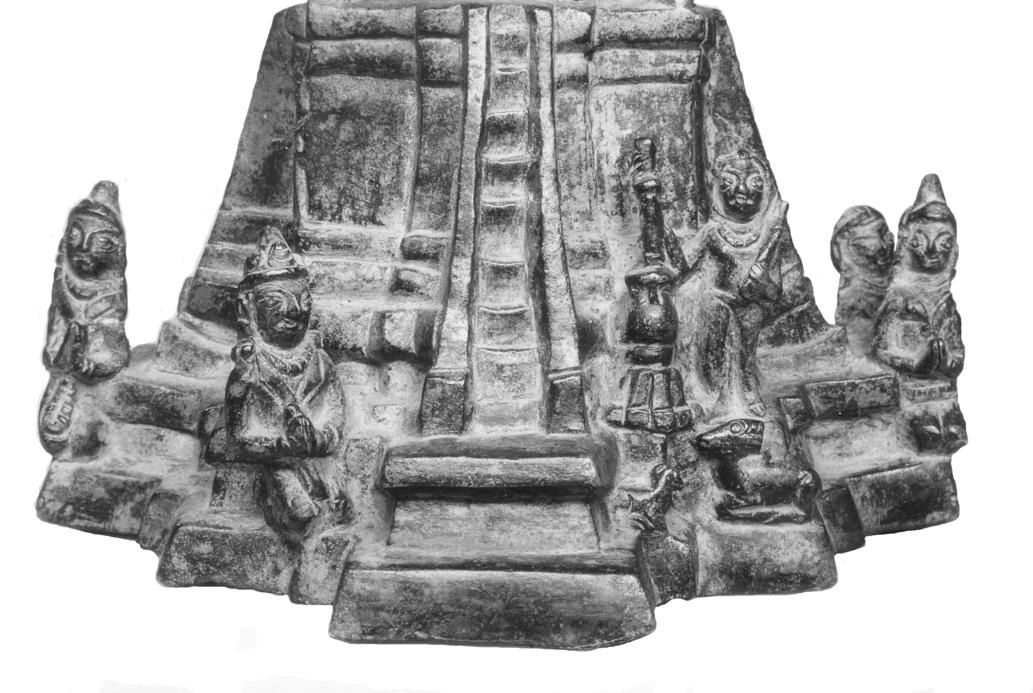Visual metaphors for real events: A 7th/8th century bronze stūpa model from Pakistan/Afghanistan and its possible connections with a jīrṇoddhāra (renovation) ceremony by Anna Filigenzi, professor at “L’Orientale” University, Naples.
The Museo d’Arte Orientale “Giuseppe Tucci” (now part of the Museo delle Civiltà), Rome, houses a small but remarkable collection of bronze sculptures that, on account of their stylistic and iconographic features, can be ascribed to that category long but erroneously known as “Kashmiri bronzes”. Over the last decades, not only the areas of production and circulation of these bronzes have been recognized as far wider than previously imagined, also their sophisticated aesthetics and historical significance began to be more distinctly perceived. As contextual knowledge increases, it becomes more and more evident that these small objects were shaped according to a rigorous iconographic syntax, which made the images understandable and meaningful to all parties involved, although at different levels, both specific for artists and donors and general for the public viewer.

Only rarely do these bronzes bear dedicatory inscriptions; nevertheless, it can hardly be doubted that they mostly celebrate ‒ or embody ‒ acts of donation, especially when, as in the case discussed here, the sculptural composition includes figures of high-ranking worshippers.
The particular interest of our bronze lies in the fact that it seems to illustrate an abbreviated and somehow formulaic narration of a real-life event, by combining the detailed representation of a cross-shaped stūpa ‒ which is likely to reproduce a real monument ‒ with the depiction of some special ceremony clearly connected with the latter.The distinctive features of the stūpa, the complex symbolism of the additional iconographic elements, and, in particular, the action performed by one of the characters, offer tantalizing clues both to the actual meaning of the narration (a ceremony in celebration of a stūpa renovation?) and to the identity of the monument itself.

